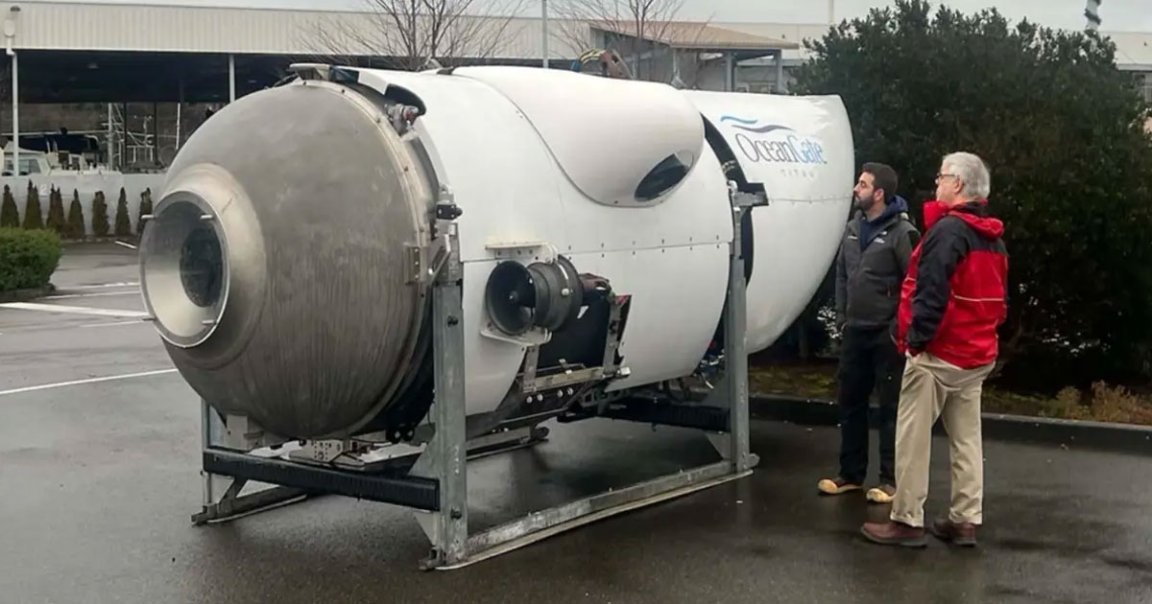
New evidence continues to strongly suggest that OceanGate’s submersible, which catastrophically imploded and killed all five passengers on its way to the wreck of the Titanic last week, unfit for the journey.
Arnie Weissmann, editor-in-chief of Travel Weekly, initially agreed to join the June expedition, the Washington Post reports, but backed out at the last minute due to a scheduling conflict. A May dive he was supposed to go on also was canceled due to bad weather.
A conversation he had with OceanGate CEO Stockton Rush the night before the expedition, however, still haunts him to this day.
According to Weissmann, Rush had bought the carbon fiber used to make the Titan “at a big discount from Boeing,” because “it was past its shelf life for use in airplanes.”
In other words, Rush knew that the carbon fiber — which is a very poor choice of material for a deepsea vessel, as many experts have pointed out — already potentially had flaws that could’ve played a role in the Titan’s tragic demise.
It’s yet another indication that Rush and OceanGate cut alarming corners in the development of the sub. In fact, experts had been warning them for years that building such a vessel while dismissing any efforts to have it qualified and tested by experts and regulators is a very bad idea.
Even after his death — Rush himself was on board during last week’s implosion — the CEO’s poor decision-making and rejections of prioritizing safety are starting to come to light.
“I responded right away, saying, ‘Don’t you have any concerns about that?'” Weissmann told the WaPo, recalling his conversation about Rush’s decision to use expired carbon fiber for the hull of the Titan. “He was very dismissive and said: ‘No, it’s perfectly fine. Having all these certifications for airplanes is one thing, but the carbon fiber was perfectly sound.'”
Unsurprisingly, Boeing has distanced itself from the tragedy, saying that it “was not a partner on the Titan and did not design or build it,” as a spokesperson told the newspaper. Interestingly, the company also found “no record of any sale of composite material to OceanGate or its CEO.”
It’s not just Weissmann who was wary of Rush’s design decisions. Last week, the New York Times reported that submersibles expert Karl Stanley heard cracking noises during a trip on board the Titan back in April 2019, leading him to send an email to Rush about his concerns.
Rush never responded to the email, but made some design changes and built a new hull, according to the report.
We’ll likely never know with 100 percent certainty what caused the Titan to implode. Experts, however, have conjectured that the spaces where carbon fiber met pieces of titanium may have allowed water to seep in.
If there’s one silver lining in all of this, it’s that the five passengers likely experienced an incredibly quick death — and not the drawn-out asphyxiation rescue teams feared last week before their fate became known.
“At that depth, you could have a leak that’s not much bigger than a diameter of one of your hairs and you would be dead within a fraction of a second,” Captain McLaren, a nuclear attack submarine commander, told the NYT.
“They really wouldn’t have even known they would have died,” he added, saying that “they would have been dead before they knew it.”
More on the tragedy: OceanGate Says Missing Submarine Passengers “Have Sadly Been Lost”